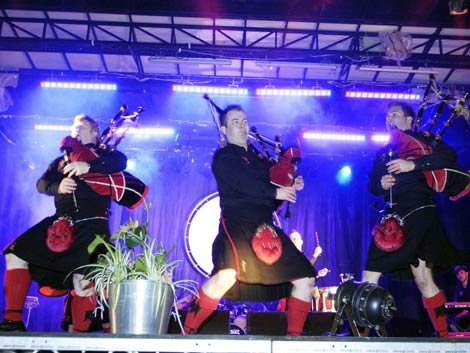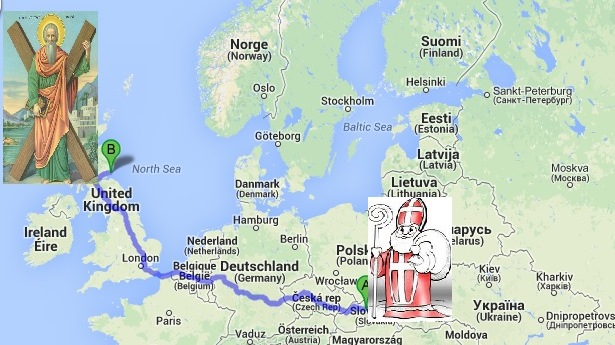From St Nicholas to St Andrew: Patron Saint Celebrations


On Saturday it was St. Andrew's Day, celebrated in Scotland as their patron saint. On the same day in Slovakia it is the name's day of Ondrej, which is the central European version of Andrew. Both refer to the St Andrew apostle who was crucified on an X shaped cross. He never made it to Scotland, but his bones were carried there by other missionaries. And St Andrew's cross has been the national symbol of the country long before whisky, kilts and the deep fried Mars Bar appeared.
In Slovakia, St Ondrej was associated with folk customs. Girls used to pour hot iron into water and the shape of the solidification determined the profession of their future husband. If it was a gun, he would be a soldier, a hammer stands for a smith and so on. There were more traditions, like preparing the cattle for the winter and starting the Christmas cooking and decorating. With the confectionary and trees on display from October in Slovakia, we can raise a glass with our friends, being a few weeks ahead with the Christmas preparations.
However, the traditions are surviving only in regions where folklore is more resistant to alcohol intoxication than commerce. Let me explain. Having a beer in a Scottish pub in central Bratislava on the 30th, I was one of the few who took any notice of St Andrew's Day. Most of folks were looking forward to St Nicholas Day, six days later than St Andrew's (which I wrote about last year).

St Nicholas' imaginary journey
Actually, it would take about six days for St Nicholas to travel by his horse pulled sledge from Liptovský Mikuláš (Mikuláš is Nicholas in Slovak) in Slovakia to St Andrews in Scotland. According to Google Maps, the distance is 2,498 km, so travelling 12 hours a day at an average speed of 32 km/h would just about do it.
The Importance of Name Days
Anyway, Ondrej starts the series of important name days in Slovakia that top at Christmas Eve with Adam and Eve. A name day is a tradition in central Europe and Latin America, when each day in the year belongs to one Saint. Obviously, as time has gone by, the Christian tradition turned into another reason to throw a party.
Some companies spoke in favour of crossing the name days off the calendar because the celebrations disturb almost every working day of the year. Indeed, today, as I am writing this piece, Barboras and Barbaras are getting their colleagues the first drink. The 13th of December belongs to Lucia (another tradition connected with witches and magic), St Steven is on December 26th, David on the 30th and of course there will be a New Year's party on Silvester - the 31st.
Erik Redli is a university graduate from Slovakia who lived in London for much of his graduate life. Read more of his posts here.








